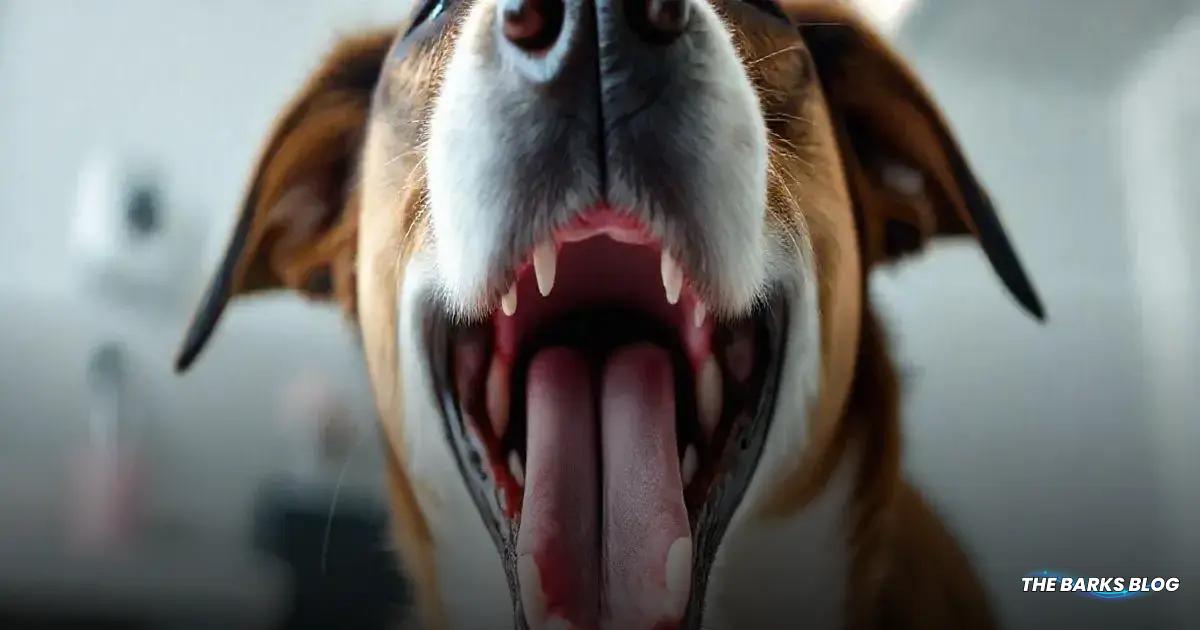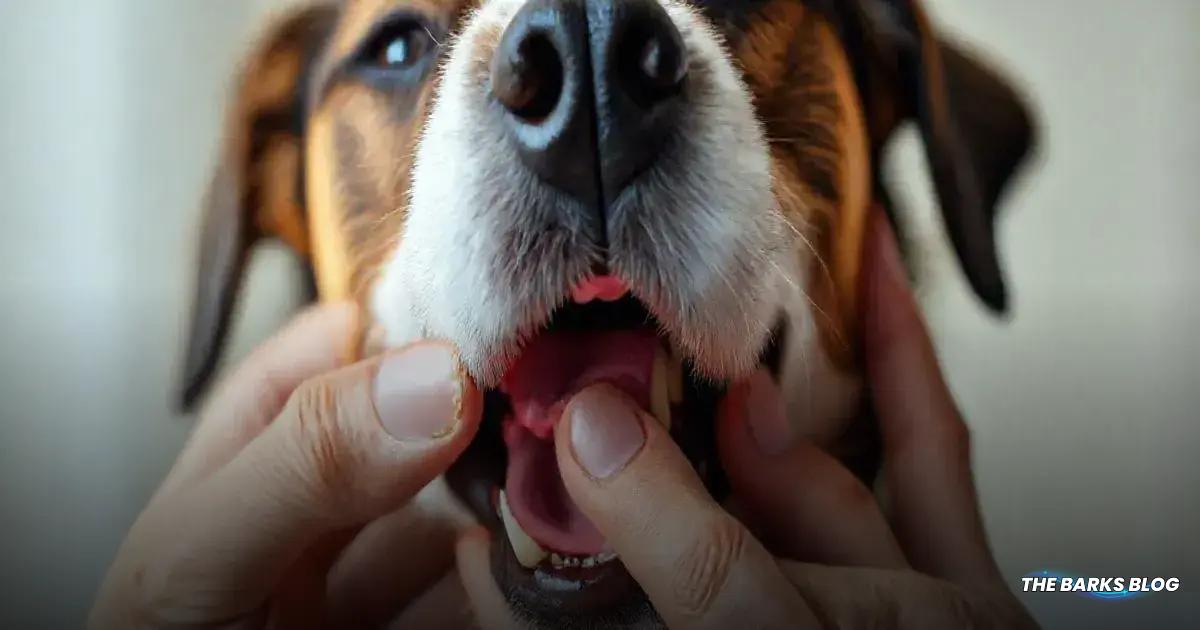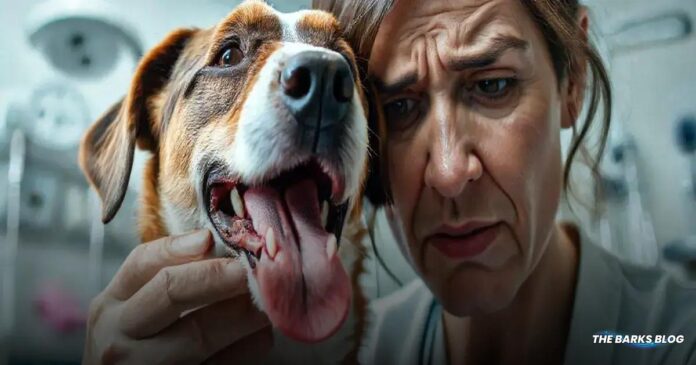Pale gums in dogs can signal serious health problems like anemia, shock, blood loss, or dehydration. Healthy gums should be pink, and any discoloration requires immediate veterinary attention. Regular checks for gum color and monitoring for symptoms such as lethargy or bleeding are essential for maintaining your dog’s health.
Pale gums in dogs can indicate serious health issues. Understanding what healthy gums should look like is essential for every pet owner. Healthy dog gums should be pink and moist. If you notice your dog’s gums are pale, it could signal underlying problems that need immediate attention.

What Color Are Dogs’ Gums Supposed To Be?
Before determining if your dog’s gums are healthy, it’s essential to know what they should look like. Generally, a dog’s gums should be a healthy shade of pink, which can range from soft pink to bright pink. This color indicates good blood circulation and overall health.
Some dogs may have pigmentation on their gums, making them appear black. If your dog has naturally darker gums, you can check the lighter spots on their gums for that crucial pink hue or look underneath their tongue. A simple test is to press down on the pink gum; it should turn white temporarily. When you release your finger, the gum should quickly return to its pink color, indicating proper blood flow.
If you notice that your dog’s gums are pale or white, this is a sign that something may be wrong and should not be ignored.

What Causes Pale Gums In Dogs?
Pale gums in dogs can be a concerning sign and may be caused by several underlying conditions. Here are some of the most common reasons:
Blood Loss
If your dog is experiencing blood loss due to an external or internal injury, or certain diseases, it can lead to insufficient blood circulation. This decreased blood flow can cause the gums to appear pale. If you notice any external bleeding or blood in your dog’s vomit or stool (which may look black or tar-like), it’s crucial to take them to the vet immediately.
Shock
Shock, often resulting from trauma or severe medical conditions, can cause a sudden drop in blood flow throughout the body. This can lead to tissue damage and organ failure, with pale gums being one of the warning signs. If you suspect your dog is in shock, seek veterinary care right away.
Anemia
One of the most frequent causes of pale gums is anemia, which occurs when there aren’t enough red blood cells in circulation. Red blood cells are vital for delivering oxygen to the body’s tissues, and a lack of them can be life-threatening. Anemia is usually a symptom of another illness, such as kidney disease, parasitic infections, or certain medications that can lower red blood cell counts. Nutritional deficiencies can also contribute to anemia.
Dehydration
If your dog’s gums are pale and feel sticky, they may be dehydrated. Dehydration can lead to a loss of moisture in the gums, making them appear dull and lacking shine. Always ensure your dog has access to clean, fresh water to prevent dehydration.
Recognizing these causes can help you take timely action to ensure your dog’s health and well-being.

What Should I Do If My Dog Has Pale Gums?
If you’ve noticed that your dog has pale gums, it’s important to take immediate action. Here’s what you should do:
First, observe for any accompanying symptoms that may indicate a more serious issue. Look for signs such as:
- Pale mucous membranes of the eyelids
- Pale nose
- Pale tongue
- Bleeding
- Seeming lethargic
- Seeming weak
- Collapsing
Check your dog’s body for any visible injuries that could be causing bleeding. If you notice pale gums along with any of these symptoms, it’s crucial to get your dog to the vet immediately as this could be an emergency situation.
If your dog has pale gums but seems otherwise normal, you should still contact your veterinarian for a scheduled appointment. They can provide further insight into the potential causes and necessary steps to take.
Treatment Options
The treatment for pale gums will depend on the underlying cause identified by your vet. They may conduct a thorough examination and possibly request a blood test to check your dog’s red blood cell count. If the pale gums are due to blood loss, your dog might require a blood transfusion or even surgery to stop the bleeding.
Regularly checking your dog’s gums and maintaining good dental hygiene is vital, as the condition of their mouth can indicate their overall health.
Conclusion
In summary, pale gums in dogs can signal serious health issues that require prompt attention.
Understanding what healthy gums should look like is essential for every pet owner, as it allows for early detection of potential problems.
If you notice your dog’s gums are pale, whether accompanied by other symptoms or not, it’s crucial to seek veterinary advice.
Regular dental care and monitoring your dog’s gum health can play a significant role in ensuring their overall well-being.
Always prioritize your dog’s health by being vigilant and proactive in addressing any changes in their condition.
FAQ – Frequently Asked Questions about Pale Gums in Dogs
What does it mean if my dog’s gums are pale?
Pale gums in dogs can indicate serious health issues such as anemia, shock, blood loss, or dehydration. It’s important to seek veterinary attention.
How can I check my dog’s gum color?
To check your dog’s gum color, gently lift their lip and observe the color. Healthy gums should be a shade of pink, moist, and should quickly return to pink after being pressed.
What should I do if my dog’s gums are pale?
If your dog’s gums are pale, check for additional symptoms like lethargy or bleeding. If any are present, take your dog to the vet immediately. If they seem normal otherwise, contact your vet for advice.
Can pale gums be a sign of dehydration?
Yes, pale gums can be a sign of dehydration. If your dog’s gums feel sticky or lack moisture, ensure they have access to fresh water and consult your vet.
What are the common causes of pale gums in dogs?
Common causes of pale gums include blood loss, shock, anemia, and dehydration. Each condition requires different levels of care and attention.
Is it normal for some dogs to have dark gums?
Yes, some dogs naturally have darker pigmentation on their gums. However, it’s important to check the non-pigmented areas for healthy pink color.




